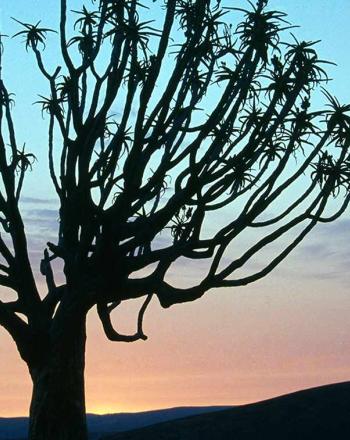Main menu
CEPF is a joint initiative of l’Agence Française de Développement, Conservation International, the European Union, Fondation Hans Wilsdorf, the Global Environment Facility, the Government of Japan and the World Bank.
Visitez le site français コア情報の日本語翻訳を読むOr use Google Translate to translate the English site to your language:
GTranslate
Priority KBA
Priority Corridor
Other KBA
Other Corridor
Succulent Karoo
Previously invested
Investment
2003 to 2012
US$9.3 million
Ecosystem Profile
Ecosystem Profile, 2009
Stats
CEPF Strategy Strategy
About this hotspot About
Investment
Dates:
2003 to 2012
Amount:
US$9.3 million
Eligible Countries
Ecosystem Profile
The CEPF strategy for this hotspot was created based on the results of the Succulent Karoo Ecosystem Plan (SKEP), which included a comprehensive and participatory process to develop a 20-year conservation and development strategy for the region. SKEP, now the Succulent Karoo Ecosystem Program, developed an overarching framework for biodiversity conservation and sustainable development in the hotspot.
To meet this challenge, CEPF awarded 89 grants valued at US$7.9 million to civil society organizations. These organizations also leveraged an additional US$4.5 million for conservation in the hotspot.
During CEPF's investment, more than 2.9 million hectares of biologically important land were added to the conservation estate. In addition, CEPF grantees helped improve the management of more than 3 million hectares of land. Anchor projects helped improve collaboration and coordination among conservation stakeholders.
CEPF promulgated best practice guidelines for the wine, rooibos, off-road vehicle and potato industries. We also promoted improved practices for ostrich farming and for rehabilitation of mine dump sites.
Stretching along the Atlantic coast of Africa, from southwestern South Africa into southern Namibia, the Succulent Karoo Biodiversity Hotspot covers 116,000 square kilometers of desert.
Consisting primarily of winter rainfall desert, the region is one of only two hotspots that are entirely arid (the other is the Horn of Africa). The Succulent Karoo is commonly divided into two zones. The first, Namaqualand, extends along the west coast of South Africa and southern Namibia. It is a winter rainfall desert with a mild climate moderated by cold Atlantic Ocean currents. The mild climate has contributed to the evolution of a rich array of endemic species. The second zone, the Southern Karoo, experiences peaks of rainfall in spring and autumn and has more extreme climate variations.
The Succulent Karoo boasts the world’s richest succulent flora, as well as high reptile and invertebrate diversity. About 40 percent of the hotspot's 6,356 plant species are found nowhere else. More than 900 are threatened with extinction.





